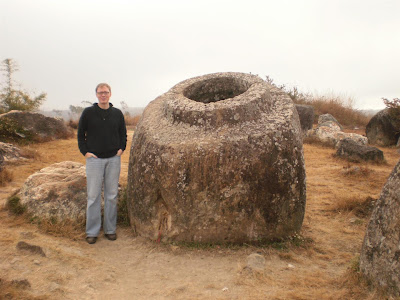Laos - Plain of Jars
 While Vietnamese celebrated the coming of the lunar new year with their families, I traveled to Laos, re-visiting Luang Prabang -- albeit with a Mekong River seasonally lower than my visit in Sept. 2009 -- the Plain of Jars, and the captial, Vientiane. To see a selection of 36 photos, click here.
While Vietnamese celebrated the coming of the lunar new year with their families, I traveled to Laos, re-visiting Luang Prabang -- albeit with a Mekong River seasonally lower than my visit in Sept. 2009 -- the Plain of Jars, and the captial, Vientiane. To see a selection of 36 photos, click here.Across my home state of Nebraska, there are hundreds of simple black and silver plaques describing something that's not there -- usually, an event or building or town that is no longer there, overgrown with grass, crops, or a dirt road. The scene is beautiful in its own right, but I feel some comfort and safety that the plaque provides, straining to create meaning from what is not there.

The Plain of Jars in Laos has no plaques, no markers, no explanations of what happened there, though MAG has placed red and white path markers where they've cleared unexploded ordinance from the soil. The giant "jars" carved from boulders can't even be carbon-dated, and whoever -- or whatever -- created them left no record or trace of their purpose, the beliefs or authorities that moved them to carve. No sleek coffee-table books explain the mystery in quippy captions. French archeologists and legends hypothesize.

With no plaques to read, no guidebooks to buy, the mystery just lingers. With no satisfaction of solving the puzzle, or having it solved for me, my imagination explodes with options -- no multiple choice, no right or wrong, black or white, just possibility.

